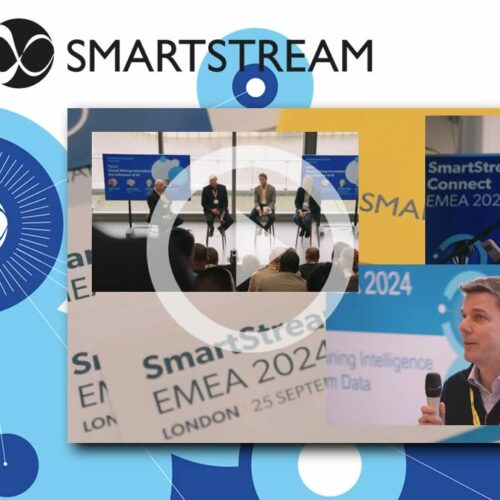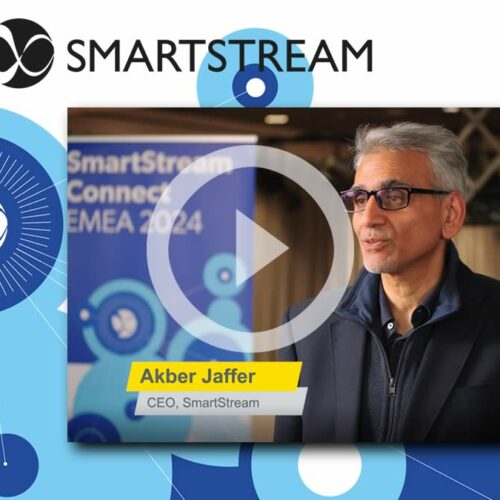Nathan Gee, Global Head of Marketing, SmartStream
The financial industry is under pressure to reduce costs, increase efficiency and improve data quality. The recent SmartStream Connect EMEA 2024 event saw Janey Speed, Capital Markets Analyst, Celent and Robin Hasson, Product Manager, SmartStream review current trends across the data and reconciliations processing landscape and ask how firms can rethink their systems to take advantage of new developments in AI-driven data automation technology.
The data landscape
Reviewing the trends shaping financial firms’ current approach to data management, Janey Speed noted that processing needs to become more scalable and involve higher levels of automation if businesses are to reduce IT and FTE costs, manage the challenges posed by staff shortages and remote working, as well as handle increased trading volumes and cope with regulatory rewrites such as the recent EMIR Refit. Firms are keen to mitigate operational risk and want to establish more effective financial reporting in order to stamp out accounting failures and other weaknesses leading to financial losses. Speed observed that financial institutions’ use of reconciliations tools remains fragmented across asset classes, and processing needs to be handled in one place, if firms are to improve efficiency.
Strong demand for more sophisticated tools
Strong demand exists amongst institutions for sophisticated tools, notably for scalable solutions that can cope with the changing regulatory environment and for compliance-focused applications capable of creating an audit trail. The appetite for cloud adoption is growing, as it offers the potential to reduce costs and automate processing. There is increasing interest in the integration of AI and machine learning with rule-based systems to improve match rates and reporting capabilities. Firms are also investigating the use of machine learning to assist with root-cause analysis. SaaS-based technology is a further focus as it allows the externalisation of software management, bringing cost benefits, easier maintenance, and better access to AI tools.
Future trends
In the future, the convergence of technologies such as AI and Blockchain looks likely to play a significant role. AI offers faster, more robust operations, standardisation, less manual intervention, and can handle vast quantities of data. Blockchain promises higher levels of security and transparency, makes transactions easier to verify, and can help reduce fraud. The convergence of Blockchain and AI promises more transparent and efficient technology.
Designing for change
So how should firms get the most out of transitioning to the cloud? Or take advantage of their data? Or choose the right apps and realise the potential of AI? Clearly, these are all hugely important questions for financial institutions, noted Robin Hasson.
Discussing how firms should be rethinking their reconciliations technology and examining the steps taken by SmartStream when designing Air 9, its AI-based data automation platform, Hasson set out what he believed to be the most challenging areas facing developers. These included obtaining accurate data from internal systems, data capture, adjustment, aggregation and normalisation, and exception management. Accuracy, acceptance from users, oversight, audit, explainability and traceability represented other significant hurdles, with audit in relation to traceability set – Hasson believed – to become even more important in the future.
Concerning the question of user acceptance, Hasson noted that SmartStream’s Air platform has been created to give the best possible user experience. It incorporates an AI-driven assistant, provides confidence and flexibility in how people choose to use information, while its deployment of natural language allows ordinary businesspeople to get up and running easily, without needing to rely on IT teams.
Hasson also considered how firms should go about designing their technology to cope with future change. Turning again to SmartStream’s Air, he underlined that the system had been developed as a framework for the future. It is SaaS-based and cloud-native, and this offers greater resilience, scalability, reduces the cost of change, enhances security, and lowers the total cost of ownership.
So, what else can firms do to build in futureproofing? Robin Hasson gave an example of how SmartStream is answering this question. The firm’s data automation platform deploys Large Language Models (LLM) to extract unstructured data, for example, from pdfs. It can identify certain types of information, such as quantity or price, contained in an invoice. The technology has been created in such a way that it does not have to be reconfigured to read an invoice in a new, previously unencountered format. This provides vital resilience to change – invoices are likely to alter in form but, in the future, the system will not require intervention from an IT department to be able to function effectively. SmartStream is also looking to apply this technique to further use cases, such as reports or other complex formats, adding even greater flexibility.






